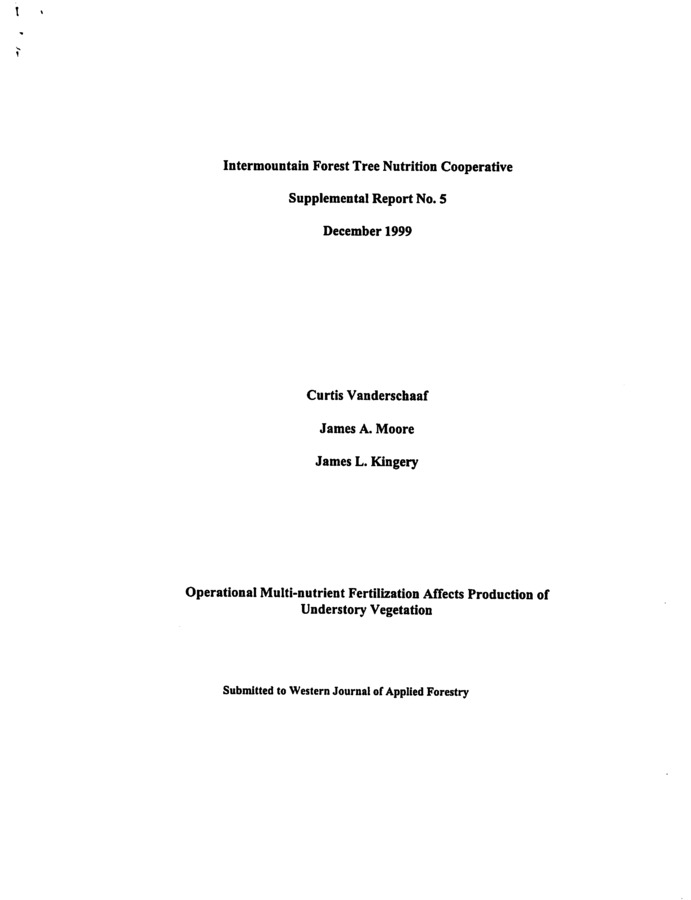PDF
Operational Multi-nutrient Fertilization Affects Production of Understory Vegetation Item Info
- Title:
- Operational Multi-nutrient Fertilization Affects Production of Understory Vegetation
- Creator:
- Vanderschaaf, C.; Moore, J.A.; Kingery, J.L.
- Date Created (ISO Standard):
- 1999-12-01
- Description:
- This study quantified the effects of operational multi-nutrient fertilization on understory shrub, forb, and grass production in forests of eastern Oregon, Washington, and Idaho. The greatest understory response to fertilization occurred in low density overstory stands. One additional cattle Animal Unit Month (AUM) can be produced per acre, one year following treatment, in stands with overstory basal area less than 50 ft.2/ac. One additional white-tailed deer equivalent AUM can be produced in stands with less than 75 ft.2/ac. overstory basal area. Multi-nutrient fertilization is an effective treatment for increasing understory production and generally improving wildlife habitat and rangeland yield in addition to tree overstory growth and yield.
- Subjects:
- research habitat rangeland fertilizer statistics
- Source:
- Vander Schaaf, C.L., J.A. Moore, J.L. Kingery, 1999. IFTNC Supplemental Report No. 5, Operational Multi-Nutrient Fertilization Affects Production of Understory Vegetation. IFTNC, FWR, Univ. of Idaho, Moscow.
- Source Identifier:
- Operational_Multi-nutrient_Fertilization_Affects_Production_of_Vegetation_IFTNC_1999
- Type:
- Text
- Format:
- application/pdf
Source
- Preferred Citation:
- "Operational Multi-nutrient Fertilization Affects Production of Understory Vegetation", Intermountain Forestry Cooperative, University of Idaho Library Digital Collections, https://www.lib.uidaho.edu/digital/iftnc/items/iftnc4821.html
Rights
- Rights:
- This document is provided by the University of Idaho Library for use by University of Idaho students, staff, and faculty. All rights to the document linked from this metadata belong to the author, rights holder, and/or provider. For more information contact The Intermountain Forestry Cooperative, https://www.uidaho.edu/cnr/ifc
- Standardized Rights:
- http://rightsstatements.org/vocab/InC-EDU/1.0/

